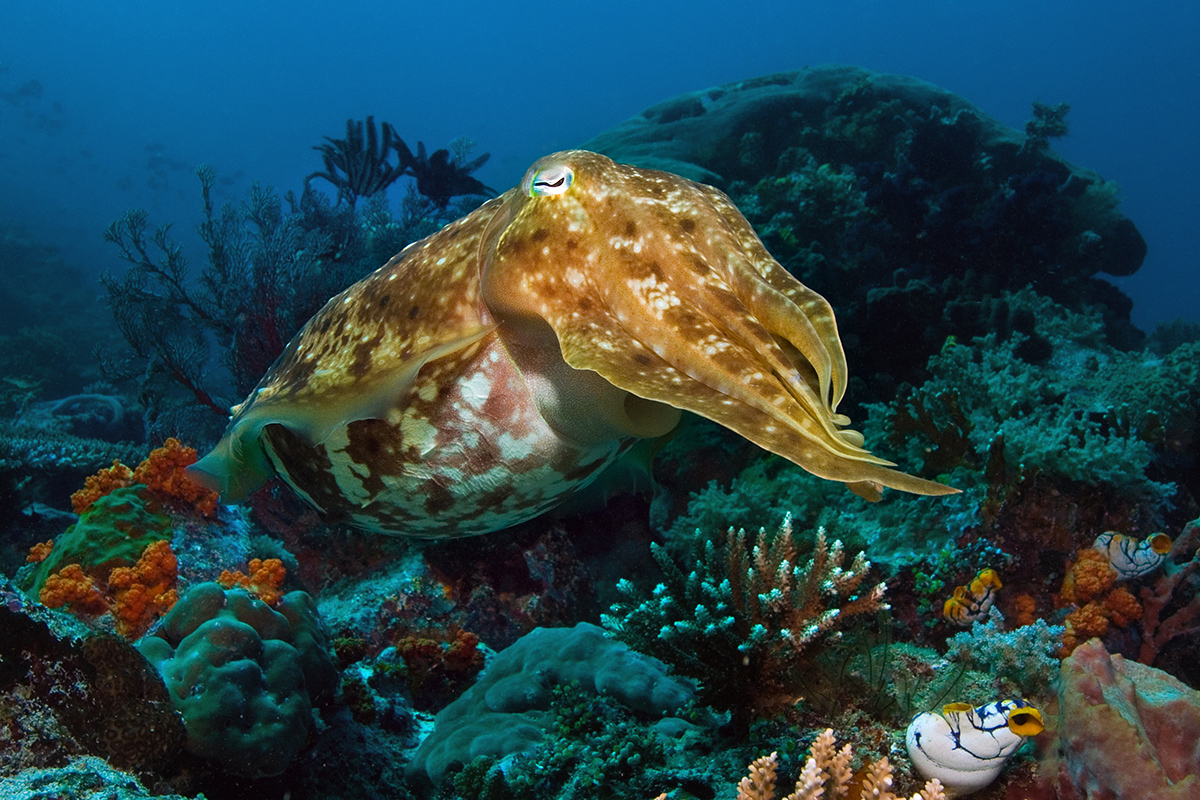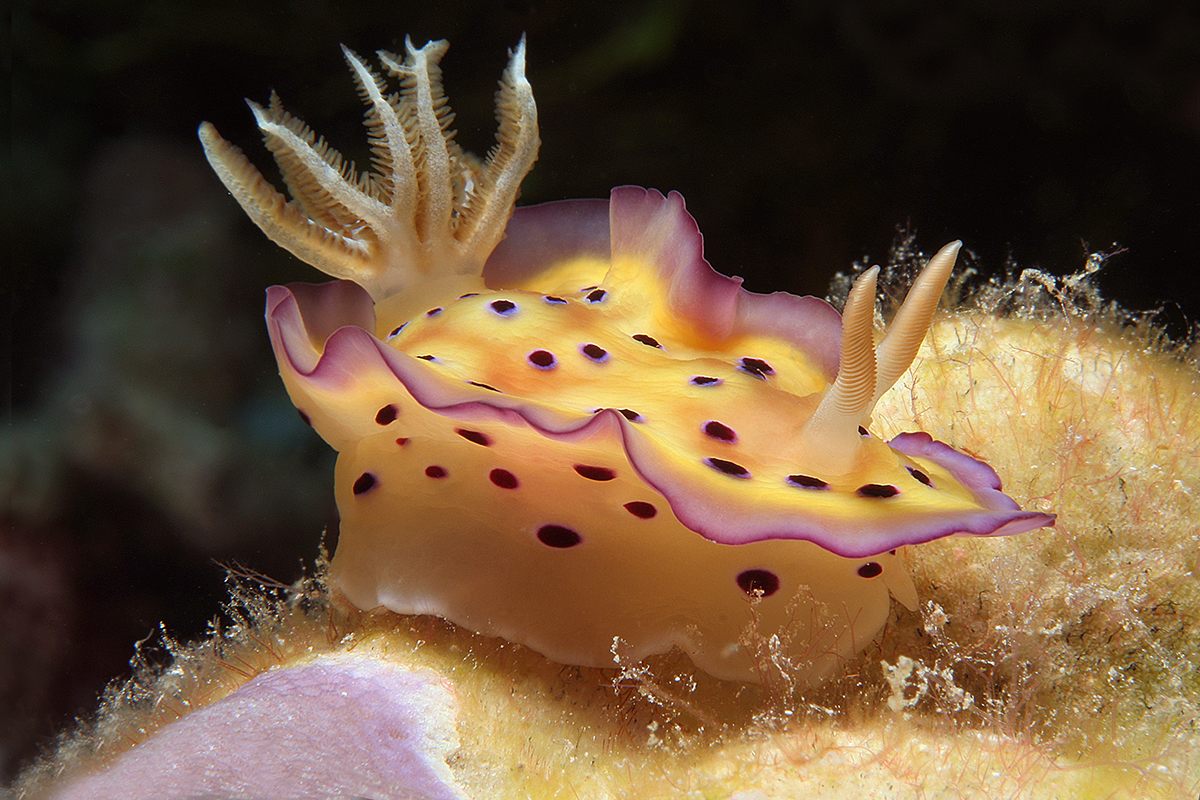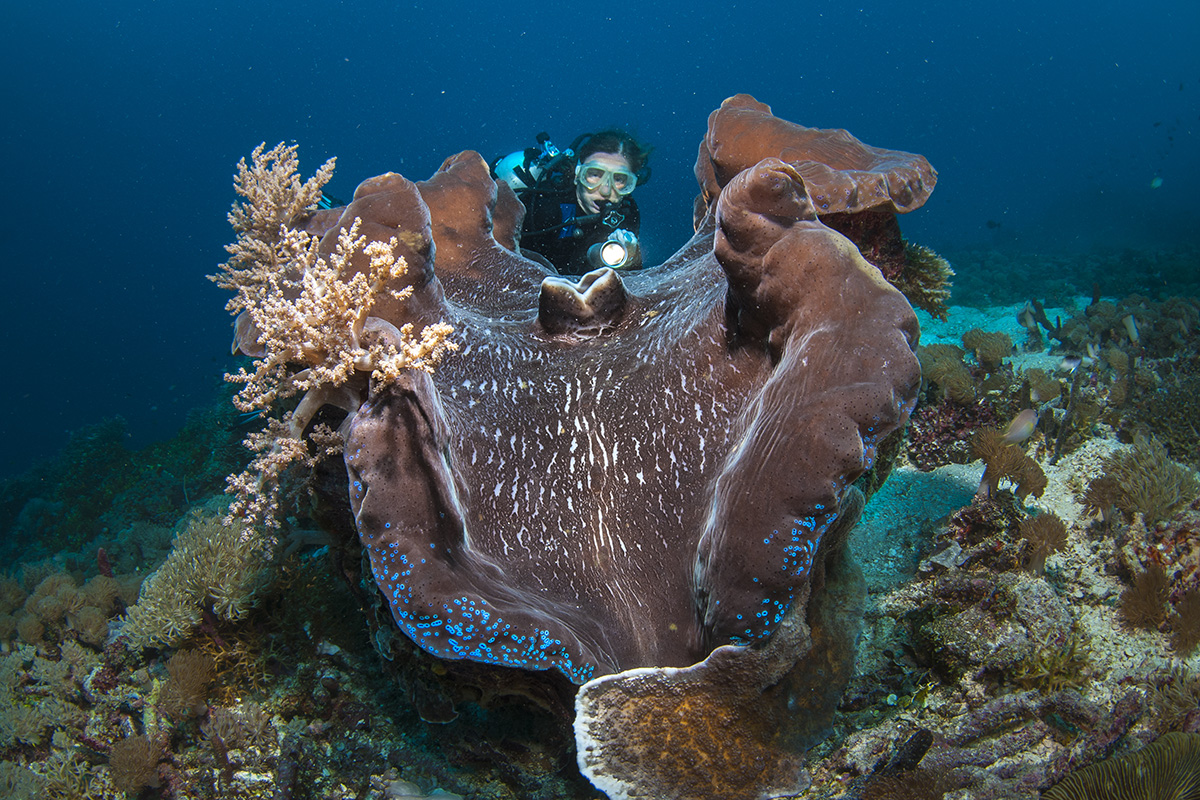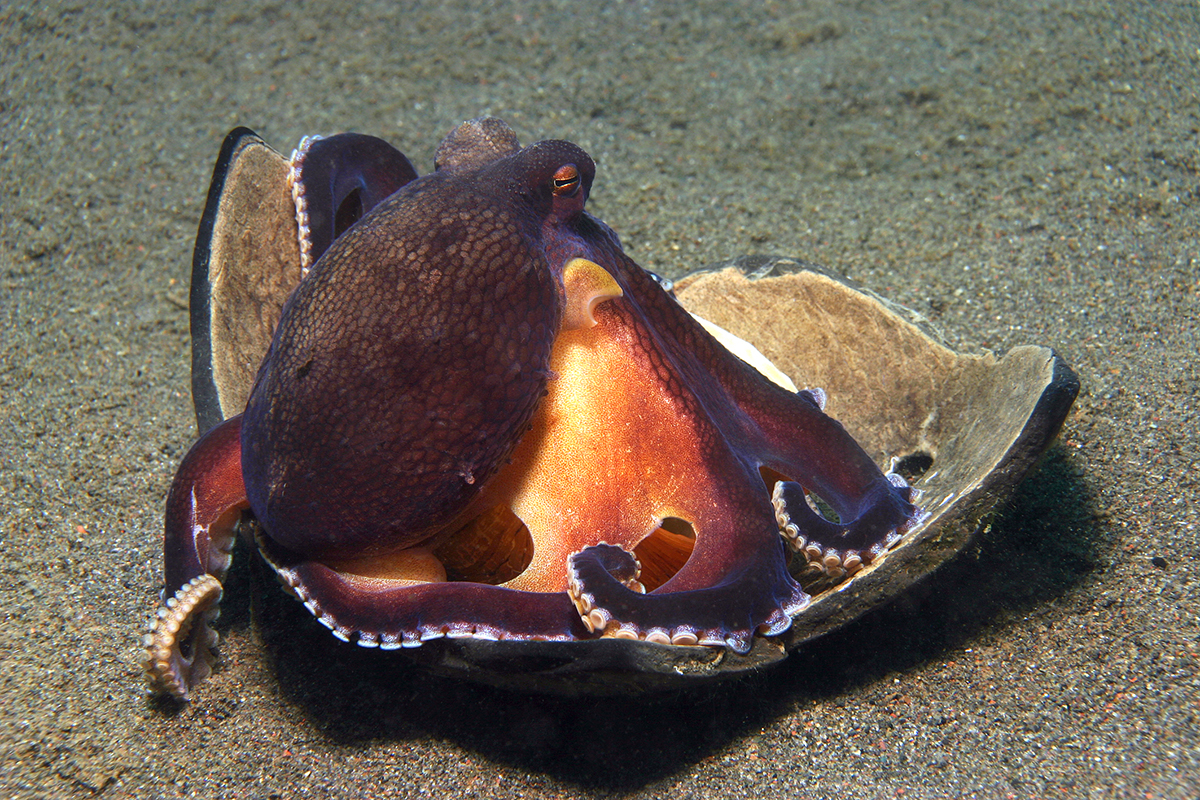Meet the Mollusks of Raja Ampat
If you have an interest in diving, you’re sure to know about Raja Ampat’s incredible array of fish and corals. But did you know there are almost 700 species of mollusks in the region? Whether you’re a nudibranch lover or want to see an impressive giant clam, we have all the info you need.
Nudibranchs
If you are an underwater photographer Raja Ampat has more to photograph than you could ever imagine. Nudibranchs are the most colourful of the mollusks and there are hundreds of species to find. Their endless variations of colours and patterns are a feast for the eyes.
You can find nudibranchs just about anywhere in the world but some divers have said to see up to 90 species in a day in Raja Ampat! This is pretty extraordinary so prepare yourself to take plenty of photos. You should be looking out for beauties like the green-lined nembrotha, blue dragons, Flabellina exopata, and leopard dorids. Of course the list could go on and on.
If you’d like more info about underwater photography in Raja Ampat read An Underwater Photography Guide to Raja Ampat
Bivalves
There are plenty of bivalves to search out on the sea floors in Raja Ampat. The beautiful blue burrowing clam, penguin wing oysters, and variable thorned oyster are just a few. However, the most famous in the region is the giant clam Tridacna gigas.
This is the largest living bivalve mollusk and also the most endangered clam species in the world. These giants have been recorded to weigh more than 200 kilograms and measure 120cm across. Also impressively, they have an average lifespan in the wild of over 100 years. That means you could visit the same giant clams over and over again for your entire diving life.
Cephalopods
Many people don’t realize that octopus, squid, cuttlefish, and chambered nautilus are also mollusks. Some of the best representatives of this group in Raja Ampat are the incredible mimic octopus, the wonderpus, the highly dangerous blue ringed octopus, and the fascinating coconut octopus. Each of these cephalopods have their own particular adaptations that are wonders of the marine world. Also worth looking out for is the flamboyant cuttlefish, one of the only poisonous types of cuttlefish.
If you enjoy night diving, Gangga Divers at Papua Paradise Eco Resort will be happy to show you some wonderful bioluminescent mollusks like the bobtail squid. The squid itself isn’t bioluminescent but it has a specialized organ on its body where the bioluminescent bacterium V. fischeri live. This symbiotic relationship keeps the bacteria fed with sugars and amino acids and stabilizes the squid’s circadian rhythm and keeps it safe from predators.
Now you know there is so much more in Raja Ampat than beautiful fish and coral to look for on your dives does it make you even keener to book a trip to Papua Paradise? If you have any questions about other species you might see or where are the best places to see them, just pop a comment in the box below. We’re happy to answer all your questions!




